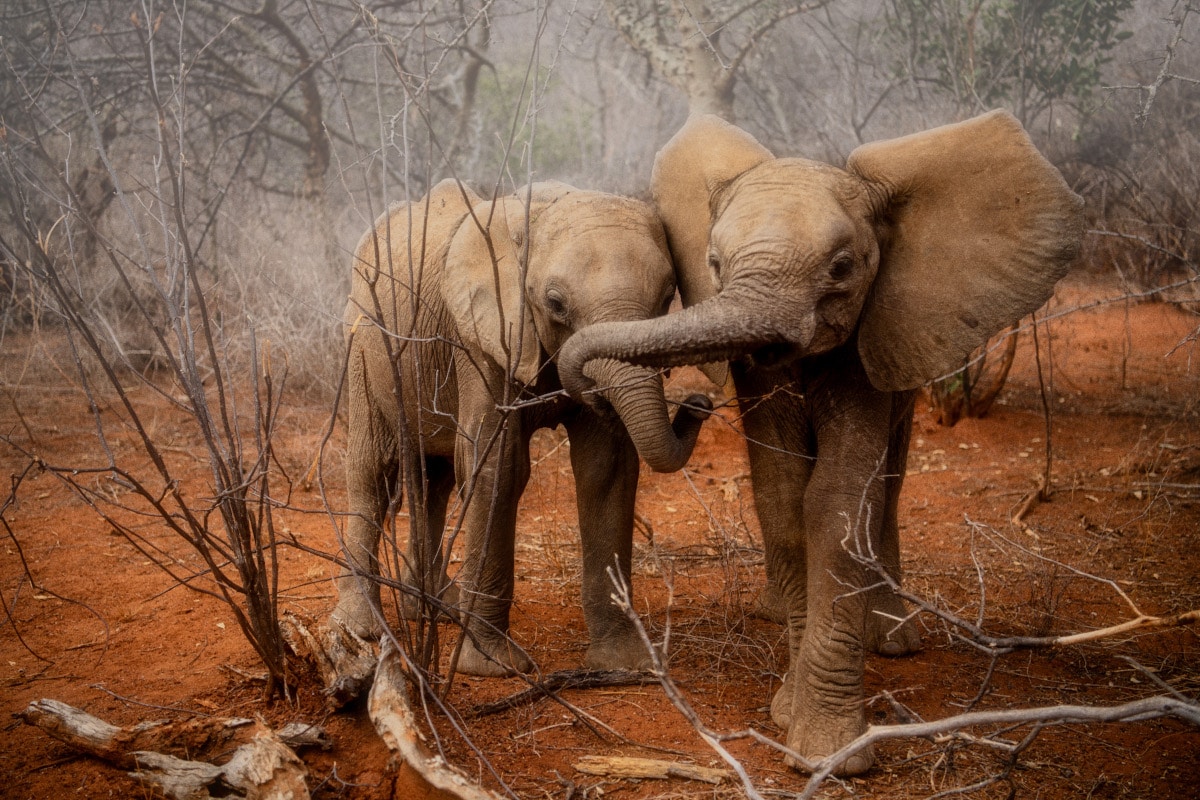
Photo: Ami Vitale/Courtesy of Vital Impacts
“Elephants play as they explore the wilderness at Reteti Elephant Sanctuary in northern Kenya. The orphans cared for by Reteti spend every day, all day exploring the wilderness of the 850,000 acre Namunyak Wildlife Conservancy where they are situated. Reteti is changing the lives of both elephants and people. Elephants are orphaned as a result of drought, human-wildlife conflict, natural mortality, and in rare cases, poaching. Reteti sanctuary is unique as the first community owned and run elephant sanctuary in Africa.”
Wildlife photographers capture poignant stories of survival and hope with their cameras. While their labor brings visibility to the issues animals face, over 100 photographers have taken their efforts to the next level. Vital Impacts, a non-profit dedicated to boosting environmental art and photography, is launching a fundraising fine art print sale in support of Reteti Elephant Sanctuary, Africa’s first indigenous-owned elephant sanctuary.
The efforts of the Reteti Elephant Sanctuary help in two ways. First, they raise orphaned elephants with the appropriate care so they can be safely released back into the wild once they come of age. Currently, the sanctuary is working with 13 elephant calves. “From being weaned from their bottles to extended explorations of the landscape on longer walks, they also increased their encounters with other wild animals and sourced more of their own food,” writes Vital Impacts.
At the same time, the Reteti Elephant Sanctuary also aspires to turn elephant conservation into an opportunity that will improve livelihoods in local communities, especially those of women. “All the keepers are from the local community and are formally trained in the care, rehabilitation and release of elephant calves. An elected board from within the community oversee all operational aspects of the Sanctuary,” states the Reteti Elephant Sanctuary on their website.
To support their efforts, renowned photographers such as Ami Vitale, Reuben Wu, Michael “Nick” Nichols, Jim Naughten, and Gunnar Gunnarson have donated their work to Vital Impacts’ annual print sale. From a tender encounter between Jane Goodall and a primate to a sci-fi-like desert landscape, the available images speak to a large number of sensibilities.
The photographs donated by photographer Ami Vitale were taken at the Reteti Elephant Sanctuary in Northern Kenya. For example, one of her image features two of the elephants that will be benefited from the print sale in an act of play as they explore the land that they call home. While another moving photograph showcases a baby elephant sweetly embracing one of its caretakers.
To browse all the images available as part of the print sale, visit Vital Impact’s website. You can also take a look at some of the photographs donated to this cause and learn their stories, below.
Vital Impacts, a non-profit dedicated to boosting environmental art and photography, is launching a fundraising fine art print sale.
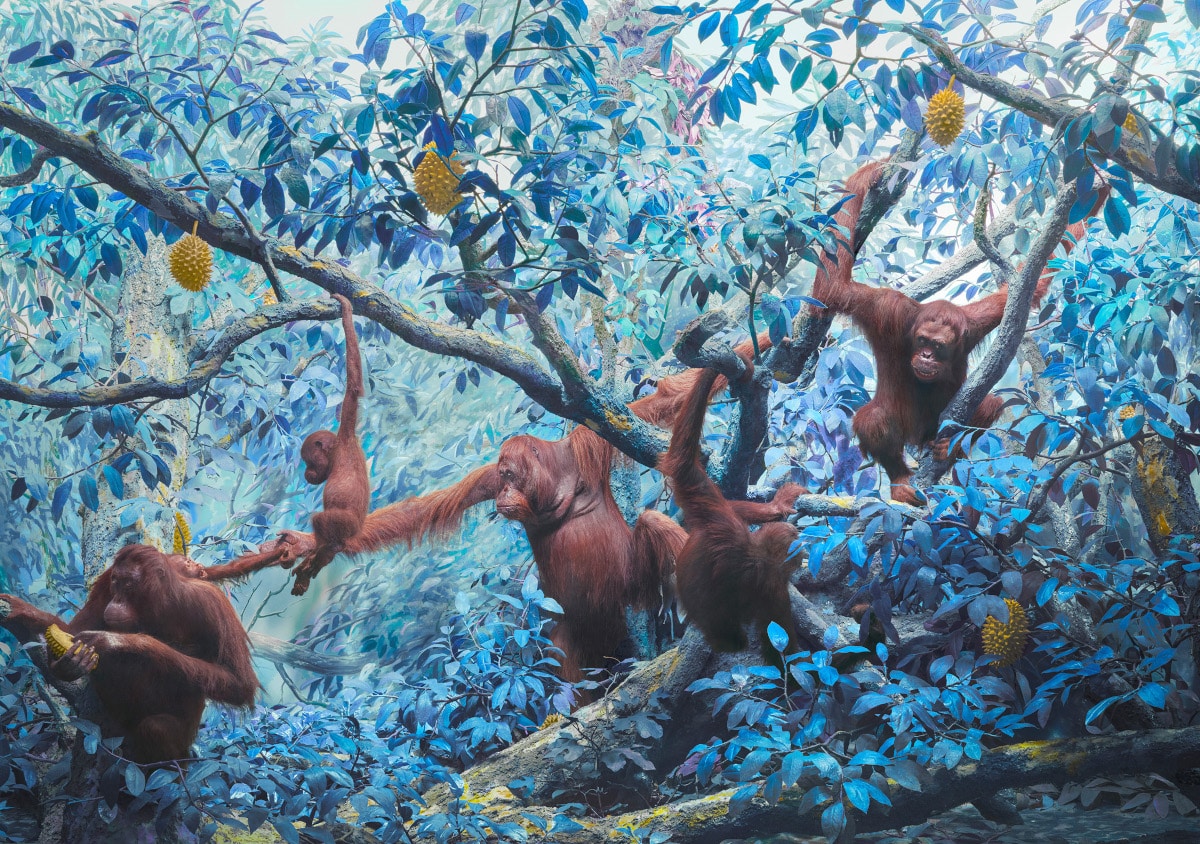
Photo: Jim Naughten/Courtesy of Vital Impacts
“Our perception is that wildlife is something other, apart from humanity. It happens elsewhere, in far away lands, in nature documentaries, zoos or safari parks. This impression is fictional and bears little resemblance to reality, both because wildlife barely exists at all in this harmonious state, and also because despite our perceived separation, we are still very much bound to the laws of the natural world. The images in this series reflect this by using natural history specimens and dioramas, themselves a fictional human construct, and adding layers and altering and exaggerating colors to highlight the artificial and nature of what we are seeing.”
The funds will go towards Reteti Elephant Sanctuary, Africa’s first indigenous-owned elephant sanctuary.
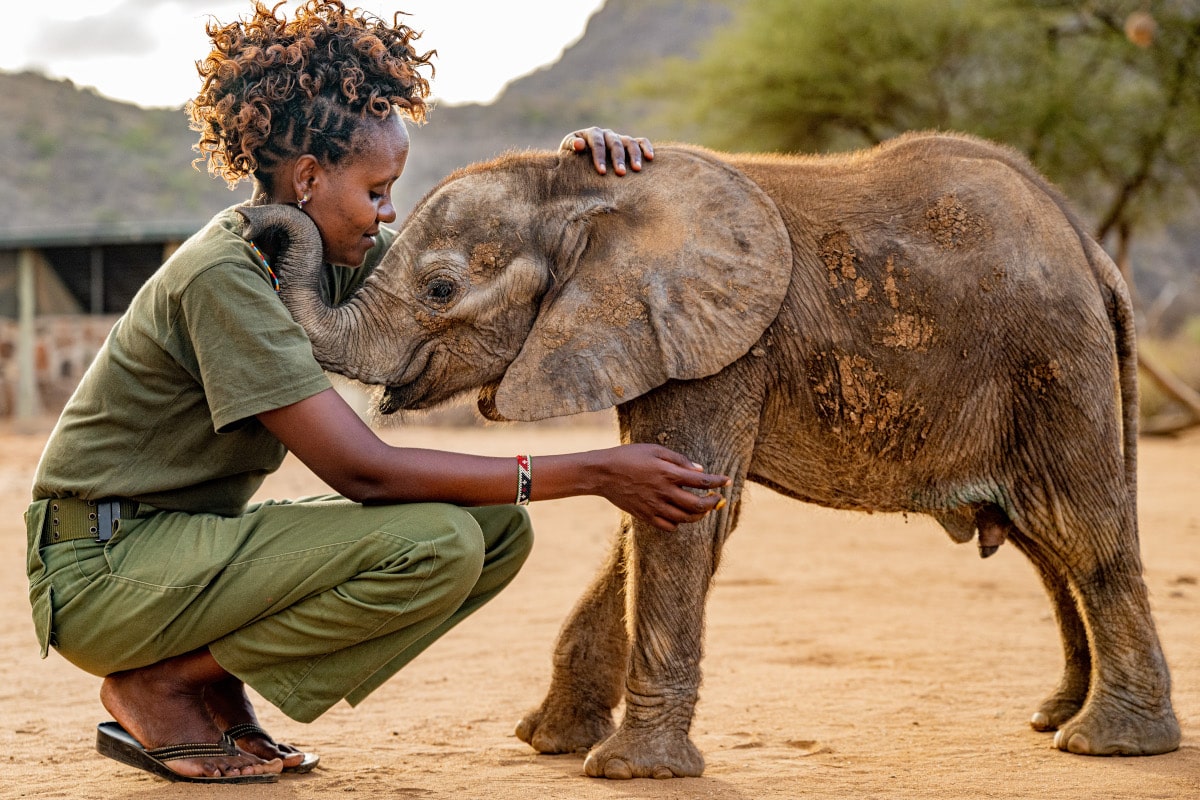
Photo: Ami Vitale/Courtesy of Vital Impacts
“Mary Lengees comforts Lodokejek, an orphaned calf at Reteti Elephant Sanctuary in northern Kenya. The sanctuary is changing the lives of both elephants and people. Elephants are orphaned as a result of drought, human-wildlife conflict, natural mortality, and in rare cases, poaching. Reteti sanctuary is unique as the first community owned and run elephant sanctuary in Africa.”
Currently, the sanctuary is working with 13 elephant calves, which are getting the appropriate care so they can be safely released back into the wild once they come of age.
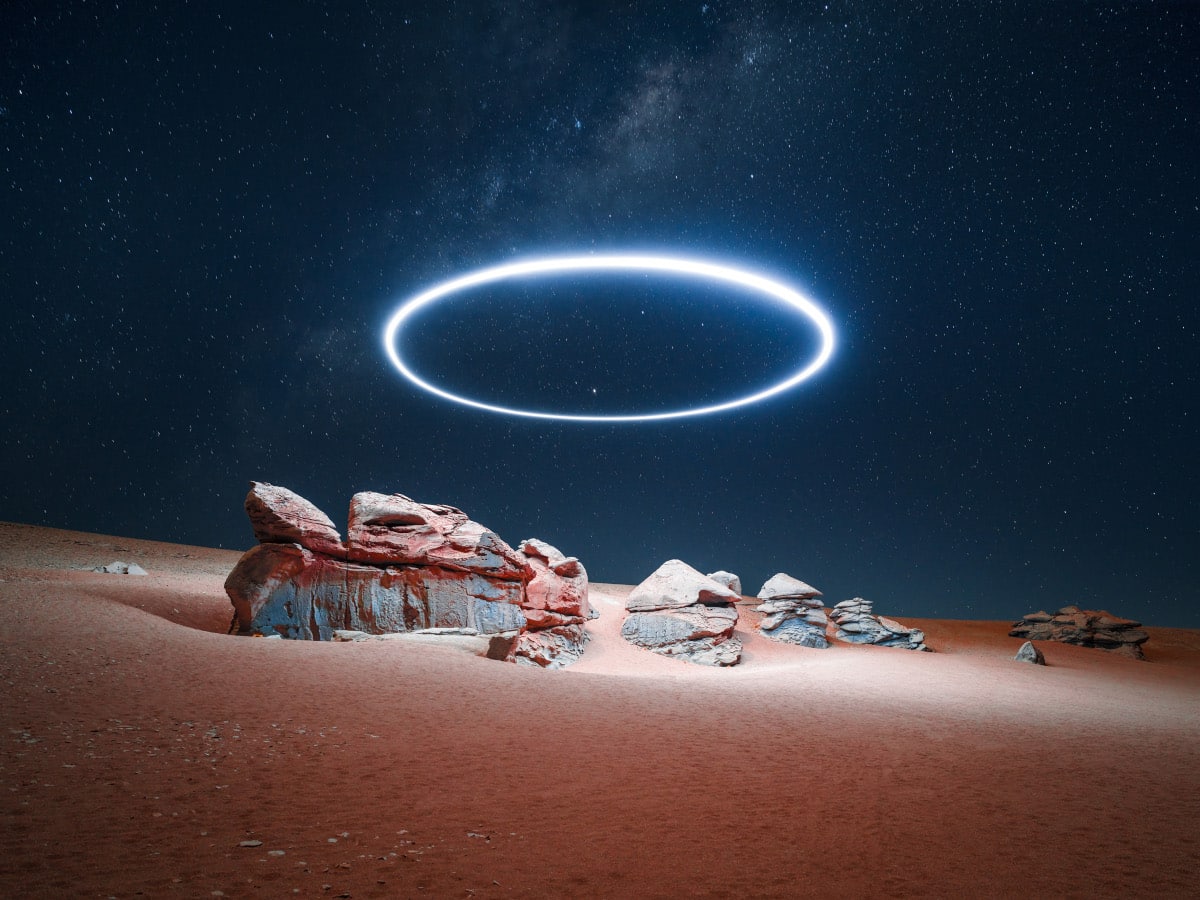
Photo: Reuben Wu/Courtesy of Vital Impacts
At the same time, the Reteti Elephant Sanctuary aspires to turn elephant conservation into an opportunity to improve livelihoods in local communities, especially those of women.
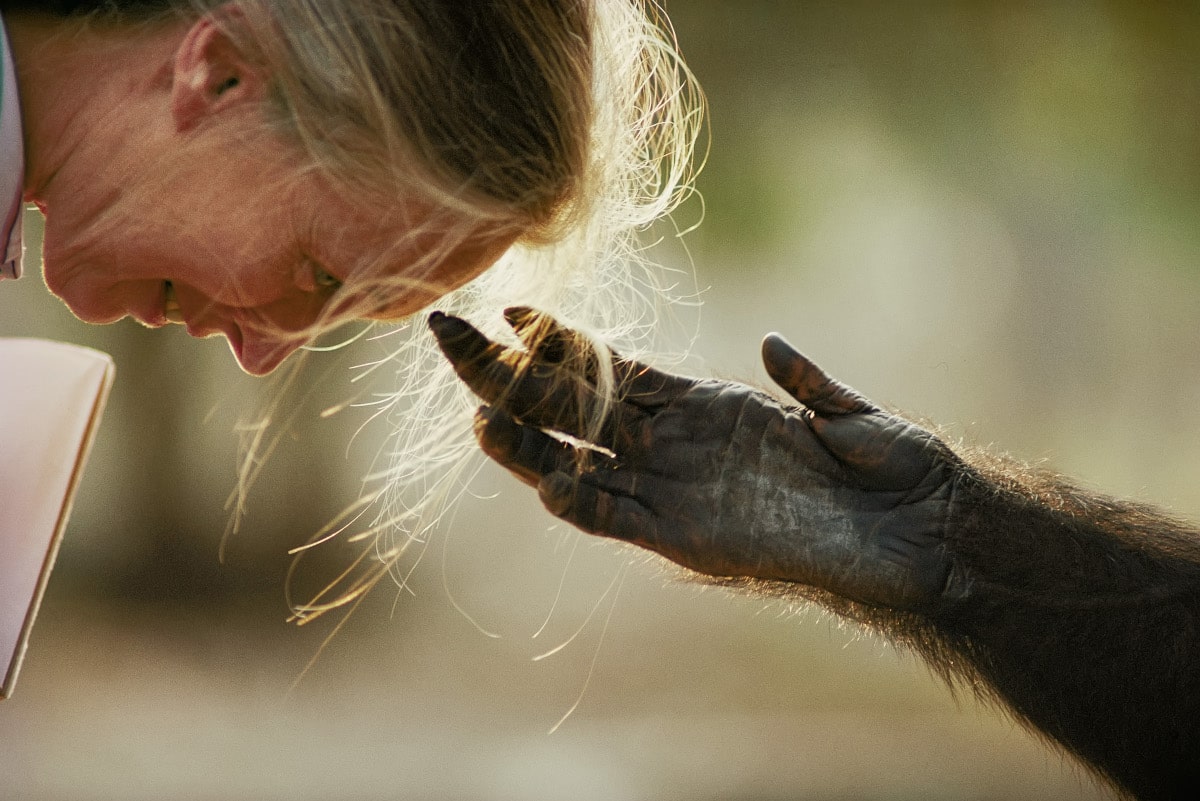
Photo: Michael “Nick” Nichols/Courtesy of Vital Impacts
“Late one afternoon as she was checking on the zoo chimps that her organization had been feeding, Jane Goodall approached the cage of a dangerous and aggressive male. Disarming him with a language learned from her years of research, she offered her golden hair for him to touch. It was a simple moment that came to represent so much.
Jane Goodall Institute does not endorse handling or close proximity to wildlife. This represents a historic context.”
To support their efforts, renowned photographers such as Ami Vitale, Reuben Wu, Michael “Nick” Nichols, Jim Naughten, and Gunnar Gunnarson have donated their work to Vital Impacts’ annual print sale.

Photo: Jim Richardson/Courtesy of Vital Impacts
“The sight was breathtaking. Tens of thousands of gannets flew out from cloud-wrapped Boreray to greet us as our boat pitched wildly on the Atlantic waves.
This uninhabited island is part of St. Kilda, forty miles out in the Atlantic beyond the Outer Hebrides.The last islanders abandoned St. Kilda in 1930, leaving it to the wild Atlantic storms and invoking melancholy memories of a lost world — and creating a haven for migrating and nesting seabirds like Gannets and Puffins. Together these stories of human abandonment and wildlife sanctuary have garnered St. Kilda dual UNESCO World Heritage Site awards.
When I came that evening I was simply seeking scenes of a remote island at sunset. I was disappointed to find Boreray shrouded in clouds. But as we came around the sun broke through and the birds swept down upon us in multitudes. The spectacle totally eclipsed my expectations, and here was the gift of wild splendor and transforming wonder. I remember whooping and hollering while the crew member held on to my belt so I wouldn’t plunge over the side and into the sea.”
To browse all the images available as part of the print sale, visit Vital Impact’s website.
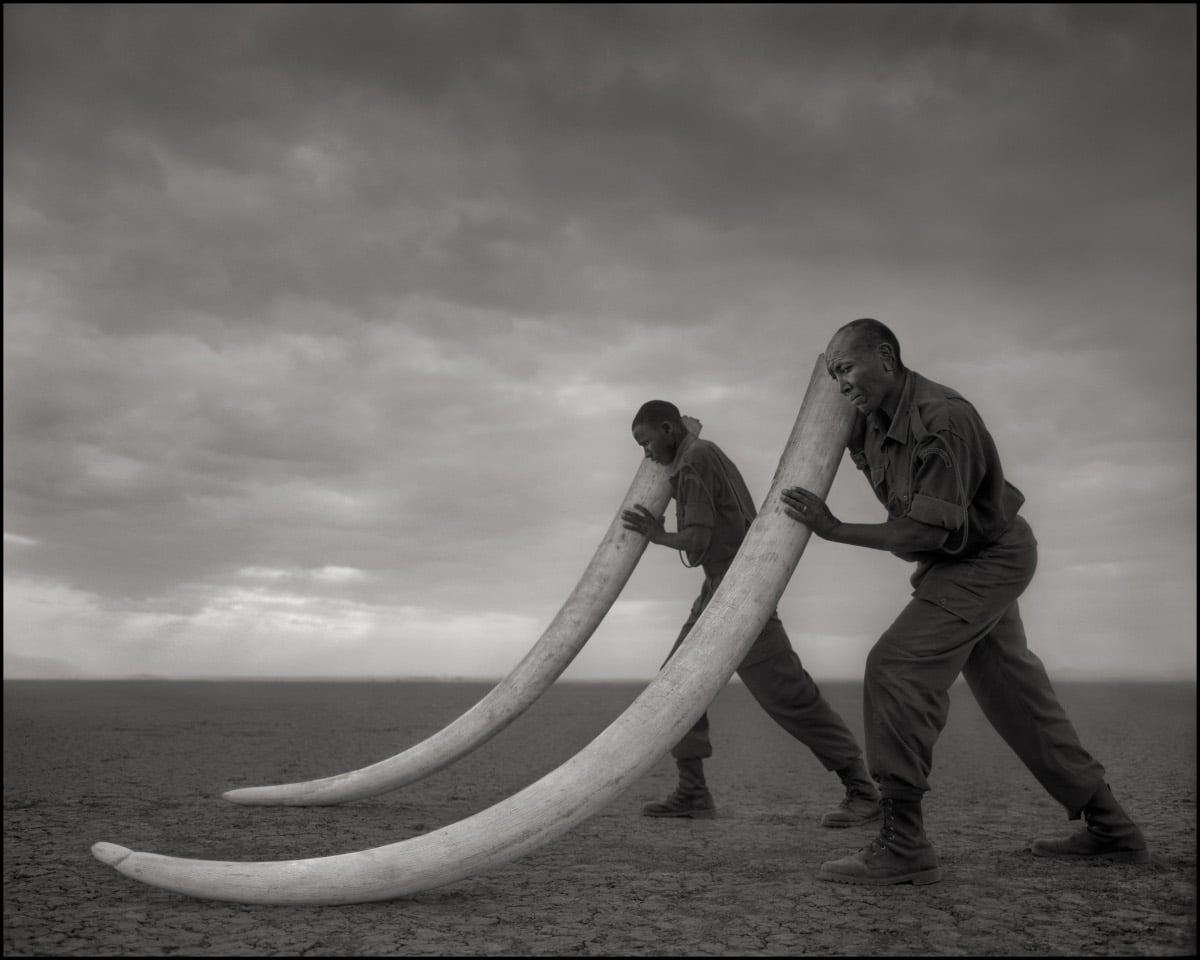
Photo: Nick Brandt/Courtesy of Vital Impacts
“The elephant was killed by poachers in Tsavo in southern Kenya in 2004. His tusks were stored in Kenya Wildlife Service’s ivory strongroom. It is doubtful that there is an elephant left alive today on the African continent with tusks this size.
The rangers in this photo work for Big Life Foundation. Big Life protects over 1.6 million acres with more than 350 rangers in 36 permanent and mobile outposts. With the aid of multiple patrol vehicles, tracker dogs, night vision equipment and aerial monitoring, this co-ordinated protection for the ecosystem has brought about a dramatic reduction in poaching of all animals in the region, and an attendant increase in key populations.”
Vital Impacts: Website
My Modern Met granted permission to feature photos by Vital Impacts.
Related Articles:
Photographer Shares How a Community in Kenya Came Together to Help Orphaned Elephants [Interview]
Photographer Wins Prize for Heartbreaking Story About the Plight of Endangered Forest Elephants
Photographer Showcases the Majestic Beauty of Elephants To Help in Their Conservation [Interview]
Herd of Wild Elephants Take an Adorable Nap Together After 300-Mile Journey
